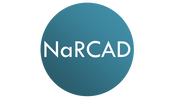|
An interview with Ramona Shayegani, PharmD, Program Lead, Academic Detailing Service, Veterans Affairs Southern Nevada Healthcare System by Kristina Stefanini, NaRCAD Project Manager Tags: E-Detailing, International, Materials Development, Opioid Safety, Substance Use, Rural AD Programs 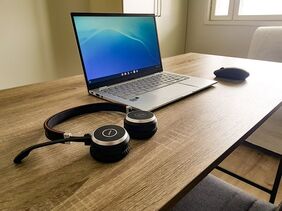 Kristina: Programs are transitioning their academic detailing (AD) efforts to e-Detailing or virtual detailing amid the COVID-19 pandemic. As part of your role at the Veterans Health Administration (VHA) Academic Detailing Service, you’ve completed e-Detailing visits, which you presented on at the NaRCAD 2019 conference. I wanted to interview you today, Ramona, to learn more about how you transitioned to e-Detailing. First, how did your program decide to do e-Detailing? Ramona: Thanks for interviewing me! We heard about an e-Detailing pilot project from our national office and we were excited to participate as our region is spread out and rural, covering Nevada, northern California, Hawaii, and Manilla, Philippines. We felt this would be an excellent setting in which to incorporate video calls into our communication with clinicians. As a result, e-Detailing has allowed us to reach our full potential as a service. Kristina: Amplifying a program’s impact and reach through e-Detailing is something many other programs want to experience. Have providers been receptive to e-Detailing visits given the current COVID-19 pandemic? Ramona: I think it varies by site, but for the most part, providers are very eager to learn about the VHA’s telehealth program. Initially, when we started e-Detailing, we launched a campaign to encourage clinicians to complete telehealth visits with patients. Now providers remember our names, and they reach out about setting up telehealth meetings with their patients and figuring out how to conduct video calls. It’s very rare for providers to reach out to academic detailers for help. We usually have to initiate outreach requests. Kristina: That’s terrific that clinicians are the ones reaching out for the service. When you’re getting ready for an e-Detailing visit, do you prepare the same way as you would for an in-person visit? What materials do you use, and how do you use them? 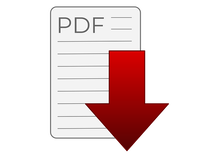 Ramona: The campaigns we’re working now are so fast-paced, so we’re sharing materials via PowerPoint presentations on a video conferencing platform; we also use electronic PDFs. In addition to showing providers electronic materials, you can still model an approach as you would in person by holding up some of the materials on the camera. For example, with naloxone education, we have naloxone spray “dummy” versions that I show providers on video; I ask if they have ever seen what a naloxone spray looks like, and whether they would be interested if I sent a model version, which they usually say yes to. Kristina: That’s something we try and tell detailers who are pivoting to e-Detailing, which is that much of the interactive approach of an in-person visit is still accessible via video! Many detailers who are trying this out for the first time are eager to find ways to build a meaningful, trusting relationship with clinicians--do you have any advice for strong relationship-building approaches during e-Detailing visits? 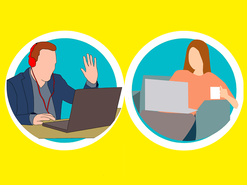 Ramona: Sometimes, especially if it’s a new provider, I try to remind myself that I might not get to talk about any of the key messages. It’s really important to take that time to introduce yourself and your service. I don’t feel like it’s anything different than meeting someone face-to-face for the first time. However, detailers need some time to try this with each other, their team, or providers that they have a good relationship with. Detailers need to build that confidence before they go out and try these video calls with people they’ve never spoken with. The more I do it, the more confident I feel, which is key in building these relationships. Kristina: That makes sense—it’s about comfort and confidence as much as knowing the evidence. We’ve also encouraged detailers to know that it may take more time to build up to delivering the key messages than you’d like it to, and to be patient and focus on building the relationship when carrying out visits online. In your experience, have you seen any drawbacks to e-Detailing? Ramona: One thing is that detailers don’t have the luxury of getting a feel of what the clinic is like, which would be easy to observe in person. A lot of times when I am in a clinic, I get a chance to talk to an auxiliary support team, or I could just walk to the other room and talk to the nurse. I’ve found ways to adapt to e-Detailing to try and have more of the team’s perspective; I’ll often ask providers if they think it would helpful for the nurse to be on the call so we can have a group discussion. Kristina: It’s really about thinking outside the box and adapting the in-person approach, while trying to maintain connection. Is there anything else you’d like to share from your experiences with implementing e-Detailing? Ramona: Detailers should acknowledge that this is a brand-new approach; you may not feel like this is your preferred way to talk to providers. Remember that it will take some time to get comfortable with it. There’s a learning curve. Now that I use this approach full-time, I just love it, and I don’t want to go back! It’s just as effective, a lot more efficient, and it allows you to be flexible. 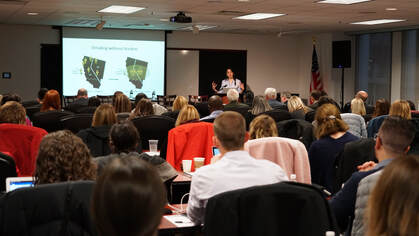 Biography. Ramona Shayegani is the program lead for VHA’s Academic Detailing service in northern California, Nevada, Hawaii and Manila. She received her Doctor of Pharmacy degree from Oregon State University in 2014 and has clinical background in mental health and addiction medicine. She was one of the first detailers to pilot e-Detailing at the VA and has completed over 400 virtual detailing visits. Comments are closed.
|
Highlighting Best PracticesWe highlight what's working in clinical education through interviews, features, event recaps, and guest blogs, offering clinical educators the chance to share successes and lessons learned from around the country & beyond. Search Archives
|
